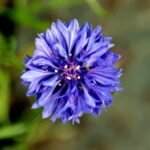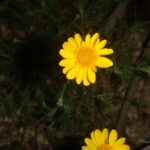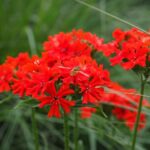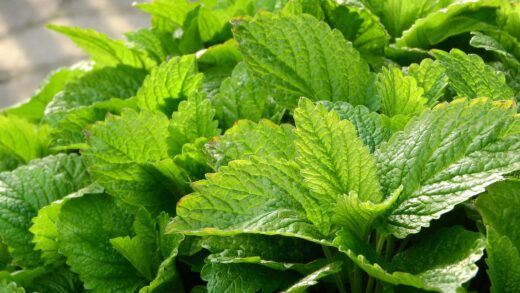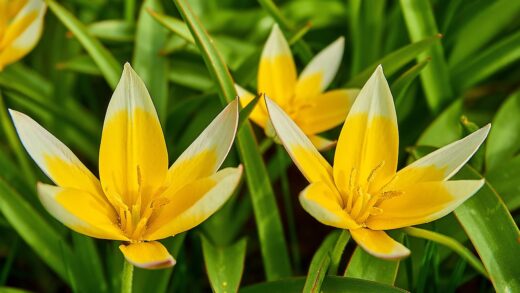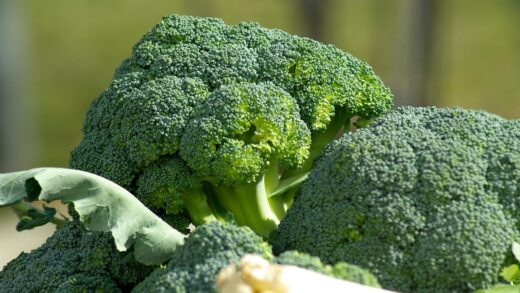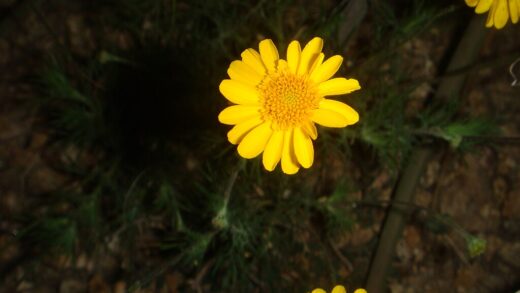The care of the bachelor palm

The Zamioculcas zamiifolia, commonly known as the ZZ plant, is a remarkably resilient and architecturally striking houseplant that has surged in popularity among both novice and experienced plant enthusiasts. Its appeal lies not only in its glossy, dark green leaves and upright, wand-like stems but also in its incredible tolerance for a wide range of growing conditions, particularly low light and infrequent watering. This tolerance stems from its evolutionary heritage in the arid regions of Eastern Africa, where it developed large, potato-like rhizomes to store water and nutrients for extended periods of drought. Understanding the plant’s natural habitat and growth mechanisms is fundamental to providing it with the best possible care, ensuring it not only survives but truly thrives in an indoor environment, becoming a long-lasting and low-maintenance green companion.
The ZZ plant’s ability to flourish with minimal intervention makes it an ideal choice for busy individuals or those new to plant parenthood. Its slow-growing nature means it does not require frequent repotting or pruning, further adding to its reputation as a “set it and forget it” plant. The waxy coating on its leaves is not just for aesthetic appeal; it serves a practical purpose by minimizing water loss through transpiration, which is a key adaptation to its native dry climate. This feature also contributes to its ability to handle the dry air often found in heated or air-conditioned homes. Therefore, maintaining its health is less about constant attention and more about establishing a correct, albeit infrequent, care routine that mimics its natural cycle of dry and wet periods.
One of the most common mistakes in caring for a Zamioculcas zamiifolia is over-attentiveness, particularly when it comes to watering. The plant’s robust rhizomatous root system is highly efficient at water storage but is also extremely susceptible to root rot if left in waterlogged soil. It is crucial to allow the soil to dry out completely between waterings, a practice that directly imitates the infrequent rainfall of its African homeland. Providing the right foundation through a well-draining soil mix and a pot with adequate drainage holes is the first and most critical step in preventing this fatal issue. This preventative approach is far more effective than trying to remedy the effects of overwatering once they have taken hold.
Beyond its basic needs, the ZZ plant’s aesthetic versatility makes it a valuable addition to interior design. Its strong vertical lines and deep green color can complement a variety of decor styles, from modern minimalist to bohemian. It can serve as a floor plant once it reaches a substantial size or as a statement piece on a table or shelf. While it tolerates low light, providing it with bright, indirect light will encourage more robust growth and a deeper leaf color, showcasing the plant at its absolute best. The key to a beautiful and healthy ZZ plant is to understand its inherent toughness and provide it with the simple, yet specific, conditions it needs to prosper.
Understanding the plant’s origins
To truly master the care of the Zamioculcas zamiifolia, one must delve into its origins in the grasslands and dry forests of Eastern Africa, from Kenya down to South Africa. In this native environment, the plant experiences distinct wet and dry seasons, a cycle that has profoundly shaped its physiology and survival strategies. It has evolved to withstand long periods of drought by storing water and nutrients in its thick, underground rhizomes, which act as natural reservoirs. This evolutionary adaptation is the primary reason for its exceptional drought tolerance in an indoor setting and underscores why overwatering is the most significant threat to its health.
More articles on this topic
The plant’s foliage also tells a story of adaptation. The leaves are naturally glossy due to a waxy cuticle, which is a protective layer that significantly reduces water loss through evaporation. This feature allows the plant to conserve moisture efficiently, a critical advantage in its arid homeland. Furthermore, the compound leaves, with their multiple leaflets arranged along a central stalk, are designed to maximize light absorption without exposing an excessive surface area to the drying effects of sun and wind. Recognizing these features helps in understanding why the ZZ plant is not demanding in terms of humidity and can thrive in the relatively dry air of most homes.
The soil in its native habitat is typically sandy or rocky, which provides the excellent drainage that the plant’s root system requires. Replicating this condition is paramount for successful cultivation. A standard potting mix amended with materials like perlite, sand, or orchid bark will create the airy, fast-draining medium that prevents water from stagnating around the rhizomes. This prevents the onset of rot, which occurs when the roots are deprived of oxygen in saturated soil. Therefore, selecting the right potting medium is not just a recommendation but a foundational requirement for long-term plant health.
The ZZ plant’s growth pattern is also a direct result of its environmental adaptations. It grows in a clumping manner, sending up new shoots from its underground rhizomes, often after a period of rainfall following a dry spell. This slow and steady growth habit means it conserves energy, a vital trait for survival in a resource-scarce environment. In a home setting, this translates to a plant that does not grow aggressively and will not quickly outgrow its space, making it a manageable and predictable element of an indoor garden for years.
The importance of proper lighting
While the ZZ plant is renowned for its tolerance of low-light conditions, this does not mean it prefers to live in the dark. In fact, providing the appropriate amount of light is crucial for its overall health, growth rate, and the vibrancy of its foliage. The term “low-light tolerant” simply means it can survive in less-than-ideal lighting, but to see it truly flourish, one should aim to provide it with bright, indirect sunlight. A spot near an east-facing window or a few feet away from a south or west-facing window is often perfect, offering ample brightness without the risk of direct sun exposure.
More articles on this topic
Direct, intense sunlight can be detrimental to the Zamioculcas zamiifolia, causing the leaves to scorch, yellow, and develop brown spots. This is because its leaves, while adapted to conserve water, are not built to withstand the harsh, unfiltered rays of the sun for extended periods. If you notice the leaves curling or turning yellow, and the plant is situated in a very bright spot, it may be receiving too much direct light. Relocating it to a position where it is shielded by a sheer curtain or the shade of other plants can quickly resolve this issue and prevent further damage.
On the other end of the spectrum, extremely low light will not kill the plant quickly, but it will significantly stunt its growth. In a dark corner, a ZZ plant may not produce new shoots for months or even years, and its existing stems may become elongated and spindly, a condition known as etiolation, as they stretch in search of a light source. While it will survive, it will not exhibit the full, lush appearance that makes it so attractive. Therefore, if your space is particularly dark, consider supplementing with a grow light to provide the necessary energy for healthy development.
An interesting characteristic of the ZZ plant is its ability to adapt its orientation to light. You may notice the stems and leaves slowly turning towards the primary light source over time. To encourage even, upright growth and prevent the plant from becoming lopsided, it is a good practice to rotate the pot by a quarter turn every few weeks. This simple action ensures that all sides of the plant receive equal light exposure, resulting in a more symmetrical and aesthetically pleasing form. This small adjustment in care can make a significant difference in the plant’s overall appearance.
Soil and potting requirements
The foundation for a healthy Zamioculcas zamiifolia begins below the surface with the right soil and potting setup. Given its susceptibility to root rot, the single most important characteristic of the potting medium is excellent drainage. The plant’s rhizomes and roots must never be allowed to sit in waterlogged soil, as this quickly leads to decay. Therefore, a standard, moisture-retentive houseplant potting mix is unsuitable on its own and must be amended to increase aeration and facilitate rapid water runoff.
Creating the ideal soil blend is a straightforward process. A highly effective mixture can be made by combining one part standard potting soil with one part perlite and one part coarse sand or fine orchid bark. Perlite is a lightweight volcanic glass that creates air pockets in the soil, improving both drainage and aeration around the roots. Sand and bark serve a similar purpose, breaking up the density of the soil to ensure that water flows through it freely. This type of gritty, porous mix closely mimics the natural substrate of the plant’s native African habitat.
Choosing the right container is just as crucial as the soil itself. The pot must have at least one, and preferably several, drainage holes at the bottom. This is non-negotiable, as it provides the only exit for excess water to escape. Terracotta or unglazed ceramic pots are often an excellent choice for ZZ plants because the porous material allows moisture to evaporate through the sides of the pot, helping the soil to dry out more quickly and evenly. However, a plastic pot with ample drainage is also perfectly acceptable.
When it comes to pot size, it is better to err on the side of a slightly smaller container. The ZZ plant prefers to be somewhat root-bound and does not require a large volume of soil. A pot that is too large will hold excess moisture for longer, increasing the risk of root rot before the plant’s root system has had a chance to absorb it. As a general rule, select a pot that is only about two to four centimeters wider in diameter than the plant’s root ball. Repotting is only necessary when the rhizomes have filled the entire pot, typically every two to three years.
Temperature and humidity levels
Zamioculcas zamiifolia is exceptionally well-suited to typical indoor temperatures, which is another reason for its popularity as a houseplant. It thrives in the same temperature range that humans find comfortable, ideally between 18°C and 29°C (65°F and 85°F). This adaptability means it can be placed in almost any room of the house without special consideration for heating. It is important, however, to protect it from sudden and extreme temperature fluctuations, which can cause stress to the plant.
The plant’s resilience does have its limits, particularly when it comes to cold. It is not frost-tolerant and can be damaged if exposed to temperatures below 10°C (50°F). Cold drafts from open windows, doors, or air conditioning vents should be avoided, as they can cause the leaves to yellow and drop. During winter months, ensure the plant is not placed too close to a cold windowpane, as the temperature difference can be significant enough to cause harm. Moving it slightly further into the room during colder periods is a simple but effective protective measure.
In terms of humidity, the ZZ plant is wonderfully unfussy. Thanks to the waxy coating on its leaves that minimizes moisture loss, it is perfectly content with the average humidity levels found in most homes. It does not require the supplemental humidity that many other tropical houseplants need, so there is no need for misting, pebble trays, or humidifiers. In fact, excessive humidity, especially when combined with poor air circulation, can sometimes create an environment conducive to fungal issues, although this is rare.
This tolerance for low humidity makes the ZZ plant a fantastic choice for office environments or centrally heated homes, where the air can become quite dry. While many other plants would struggle with brown, crispy leaf tips in such conditions, the ZZ plant will maintain its lush, green appearance without complaint. Its ability to handle a wide range of temperatures and its indifference to humidity levels solidify its status as one of the most low-maintenance and adaptable houseplants available.
Recognizing signs of distress
Even a hardy plant like the Zamioculcas zamiifolia will exhibit signs of distress when its care needs are not being met. One of the most common and alarming symptoms is the yellowing of leaves. While a single older leaf turning yellow and dying off is a natural part of the plant’s life cycle, widespread yellowing, especially on newer growth, typically points to a problem. Most often, this is a classic sign of overwatering. When the soil remains saturated, the rhizomes and roots begin to rot, preventing them from absorbing water and nutrients, which ironically manifests as yellow, wilting foliage.
If you suspect overwatering is the cause of yellowing leaves, the first step is to check the soil moisture. If the soil is wet to the touch several days or even weeks after the last watering, it is a clear indication of a problem. You may need to gently remove the plant from its pot to inspect the rhizomes. Healthy rhizomes are firm and pale, while rotting ones will be soft, mushy, and often dark brown or black. If rot is present, it is crucial to trim away all affected parts with a sterile blade and repot the healthy remainder in fresh, dry, well-draining soil.
Another sign of trouble is when the stems, or petioles, become soft and mushy at the base. This is a more advanced stage of root and rhizome rot caused by excessive moisture. In such cases, the structural integrity of the stem is compromised, and it may fall over. Unfortunately, once a stem has started to rot at the base, it cannot be saved. The best course of action is to cut the entire affected stem off at the soil level to prevent the rot from spreading further through the rhizome system.
Conversely, while far less common, underwatering can also cause symptoms. If the plant is severely dehydrated, you may notice the leaves starting to wrinkle or curl inwards, and the stems may begin to look a bit shriveled. This is the plant’s way of conserving its remaining moisture. Unlike the signs of overwatering, these symptoms are easily remedied. A thorough watering will typically cause the leaves and stems to plump back up within a day or two, demonstrating the plant’s remarkable ability to recover from drought.
Long-term health and maintenance
Ensuring the long-term health of your Zamioculcas zamiifolia involves a simple, consistent maintenance routine that goes beyond basic watering and light. One easy yet beneficial task is to periodically clean the leaves. Over time, dust can accumulate on the broad, glossy surfaces, which not only dulls the plant’s appearance but can also clog the pores (stomata), slightly hindering its ability to photosynthesize. Using a soft, damp cloth to gently wipe down each leaflet every few months will keep it looking its best and functioning efficiently.
As a slow-growing plant, the ZZ plant does not require frequent repotting. It actually prefers to be slightly pot-bound, and repotting it too often or into a pot that is too large can lead to stress and an increased risk of root rot. Generally, you should only consider repotting every two to three years, or when you see clear signs that it has outgrown its current home. These signs include rhizomes pressing against the sides of the pot, distorting its shape, or roots emerging from the drainage holes. When you do repot, choose a container that is only one size larger than the previous one.
While pruning is not a regular requirement for the health of the plant, it can be done for aesthetic purposes or to remove any unhealthy growth. If a stem becomes yellow or damaged, you can prune it off at the base using a clean, sharp pair of scissors or pruning shears. This tidies up the plant’s appearance and directs its energy towards new, healthy growth. This minimal pruning need is another factor that contributes to the ZZ plant’s reputation for being exceptionally low-maintenance.
Finally, long-term health also means keeping an eye out for any potential issues before they become serious problems. A regular, quick inspection of your plant every time you water it can help you catch early signs of pests or disease. Check the undersides of the leaves and the junctions where leaflets meet the stem. By maintaining a simple routine of cleaning, appropriate repotting, occasional pruning, and regular observation, you can ensure your Zamioculcas zamiifolia remains a vibrant and healthy feature in your home for many years to come.








